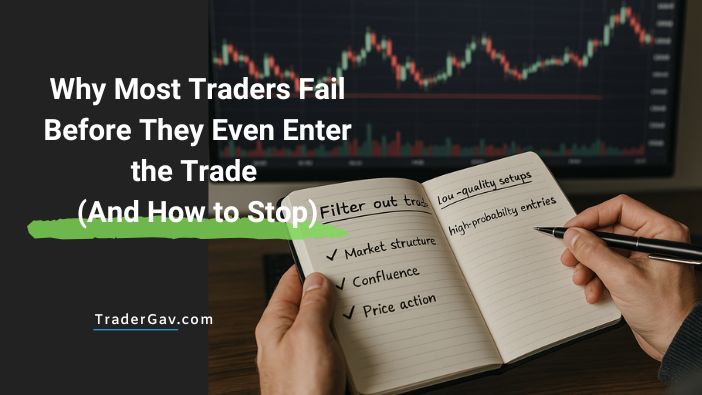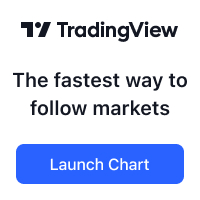
This morning, I watched price chop around the middle of a range like it hadn’t had coffee yet.
No real direction. Just… existing.
I sat there, fingers twitching over the mouse. And I thought: This is how it starts, right? The death-by-a-thousand-trades mindset. The “it’s close enough” disease.
Yeah. Been there.
And if you’ve ever felt that itch, like you just need to click into something, you’re not alone.
But if you want to grow this thing, I mean really level up? You’ve gotta start filtering like a sniper. Not spraying like a paintball rookie.
Let’s get into it.
1. Don’t Trade a Candle. Trade the Story
Here’s the honest truth: most traders are out here reacting to candles like they’re memes—“Oh look! A bullish engulfing!”
Forget that.
Would you judge a book by one line pulled out of chapter seven?
Exactly.
Trade context, not candles.
You want to know:
- What just happened before this move?
- Did price sweep a key level or just drift there?
- Is structure supporting the idea—or laughing at it?
If price didn’t just tap into something meaningful, it’s probably not ready to move meaningfully.
2. Avoid the Dead Zone
I’ll say it clearly: the middle of a range is where trades go to die.
No structure. No imbalance. Just vibes.
If your trade setup looks like it belongs in a “maybe” pile, it belongs in the trash.
So where should you be looking?
- Session highs/lows — magnets for liquidity.
- VWAP + standard deviations — especially on the 10-minute.
- Fair Value Gaps and old highs/lows — the market loves to revisit unfinished business.
Stick to these. Trade the spots that matter.
3. Confluence Isn’t About Clutter
Let’s clear this up now.
Confluence isn’t stacking 4 indicators and hoping the stars align.
It’s about multiple pieces of evidence pointing to the same outcome.
Think of it like this:
One clue = maybe. Three clues = let’s go.
Here’s a quick hit list:
- Price hits a previous session high? ✅
- Liquidity swept and market shifts structure? ✅
- Clean FVG right there on the 1M? ✅
You’re not being paranoid. You’re being precise.
4. Rules First. Ego Later.
Every time I bent my rules, I lost.
Sometimes instantly. Sometimes slowly. But always painfully.
So I made my system airtight.
Simple filters. No gray areas.
Here’s a sample:
- Is price at a high-probability level?
- Is there clear liquidity taken or a breaker block?
- Is there a shift in structure or order flow?
- Is the RR at least 2:1?
If it doesn’t check the boxes, I walk away.
Discipline isn’t boring. It’s freeing.
5. The 1-Minute Is for Precision, Not Discovery
I used to stare at the 1-minute chart like it was a crystal ball.
Spoiler: it’s not.
The 1M is your scalpel, not your strategy.
By the time you’re there, you should already know:
- Where you want to trade.
- Why price should move from that area.
- What you’re waiting to see before pressing the button.
Then… and only then… you use the 1M to execute with precision.
You’re looking for the flip. The break. The moment of intent.
That’s when you strike.
6. Tight Filters Make You Fast, Not Slow
You might think filtering more means missing out.
Let me flip that.
Filtering actually gives you confidence. When something lines up, you’re not hesitating—you’re pulling the trigger with full conviction.
That’s the trade-off.
Less stress. Better entries. More control.
Most traders aren’t overtrading because they’re confident. They’re overtrading because they’re uncertain.
Real Talk: You’re the Filter
Systems help. Tools help. But at the end of the day, you are the last line of defense.
You choose what to trade.
You decide when to enter.
You build the habit of saying “no” more often than “yes.”
And here’s the best part?
The more you say no, the better your yes becomes.
Before You Go…
Just a quick note to share—
If you’re sitting on a bunch of “almost” trades right now, close the chart and go for a walk.
Seriously. Let the junk pass.
You’re not here to trade often. You’re here to trade well.
Let the amateurs chase shadows. You? You’re here to build a habit of clarity, precision, and patience.
You’ve probably heard it a million times, but this time let it sink in:
Every bad trade you skip is a win.
Every high-quality entry you wait for builds the account.
That’s the real edge.
And the best part?
It’s easier than you think, when you filter like a pro.
Your turn:
What’s your go-to filter before entering a trade?
Drop it in the comments—I wanna hear what keeps you disciplined.
Stay sharp,
Your fellow chart junkie and trade sniper


Leave a Reply